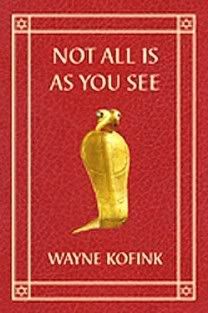READING AND LISTENING
 I've been listening to a audio recording of Harry Potter and the Deathly Hallows read by Jim Dale. He is an amazing voice actor, able to create the dozens of different voices necessary for the huge cast of characters. It's a delight to listen to him, although the time Harry, Ron, and Hermione spend wandering through various forests is still interminably long. I hope that's fixed in the movies. It is interesting how much more I picked up listening to the book read than I did reading it to myself.
I've been listening to a audio recording of Harry Potter and the Deathly Hallows read by Jim Dale. He is an amazing voice actor, able to create the dozens of different voices necessary for the huge cast of characters. It's a delight to listen to him, although the time Harry, Ron, and Hermione spend wandering through various forests is still interminably long. I hope that's fixed in the movies. It is interesting how much more I picked up listening to the book read than I did reading it to myself. Maybe it's my profession or perhaps just my interests, but I suspect that I am involved in reading books aloud to a far greater degree than most people. Every Sunday there are three Scripture lessons read aloud at our worship services. This is actually a modern approach since for years the Scriptures were chanted rather than read. I also belong to a prayer group where we study a book each week. (Right now it's Seeds a collection of excepts from the writings of Thomas Merton.) Generally we read section alound and discuss them. And although it's not quite the same as reading books, my Reader's Theater group does read the scripts. Also, when I visit at Saint Leo Abbey, dinner is accompanied by reading.
Of course, all this started when I was just a little tyke and my mother would read me a story every night at bed time. It was usually one of the Little Golden Books. When my mother was in the hospital when my sister was born, I conned my Father into reading a bunch of stories telling him that's what Mom did. It's one of my earliest memories. More unusual was the reading aloud with my friend Jim. I was probably around 11 or 12 at the time. I would go to Jim's house on a summer afternoon and we'd play war games. We'd take a break when his mother brought us refreshments and read from his collection of Oz books. That's the series by L. Frank Baum that began with The Wonderful Wizard of Oz. Most people are only familiar with that first book. We'd read a chapter each. I don't suppose young people do that today.
Most people are first taught to read aloud, although I have heard of youngsters who watch their parents read aloud and learn how to read that way. Not me. I learned to read using look-say method where you learn whole words at a time. Turns out that isn't as good as learning phonetically, but it was the "in" method in the 1950s. Besides, I have the happy memories of the Dick and Jane stores. We started with a huge book with the teacher pointing out the words with a rubber tipped pointer and pronouncing them. Then each person in our reading group did the same until they could read the whole book. Then they were ready to go one to having our own books to read from.
For some reason they wouldn't let you take the readers home for fear you would "read ahead" which was forbidden. Fortunately, as soon as I was able to read tolerably well, my Father took me to the old Hamlin Park Library, a wonderful old-fashioned library. Here's a picture of the building designed by one of the masters of prairie architecture, Dwight H. Perkins.

There was a wonderful display of books at kid level. I think I picked up a Dr. Suess book. My father had me read it to him. After a few moments a librarian came over to say we had to be quiet in the library, though she did remark to my father that I read very well. That was the beginning of my love affair with libraries. Hardly a week has gone by in my life when I haven't stopped in at a library somewhere.
So we had to learn to read silently to ourselves. That was a real struggle for some of my peers. Actually, there is something quite unnatural about reading silently. As I understand it, writing came about as a memory tool. It was to remind you of things so you could tell a story for example. That's true of the picture writings I have seen used by some American Indians as a way of recording a story. If you didn't know what the story was, you'd have a hard time figuring it out. That's true even with phonetic systems like Hebrew. The Hebrew characters started off as picture writing, but became phonetic. They indicate sounds. Except Hebrew only had consonants and a few vowel-like symbols. You had to know what the word was to get it right. It's like this billboard I read with the message "IM STRVN" which I kept reading as "I'm striving" until I realized that's not a message a restaurant would post. It was supposed to be read, "I'm starving." Ah, yes.
Back to reading aloud. I think the first example of someone who could read silently to themselves as Ambrose, Bishop of Milan in the 4th century. As I recall the story, someone brought Ambrose a document, he looked at it for a time, and without reading it aloud knew what it said. People were astounded.
This brings me back to Bible reading. The evidence is that normally a person wrote by dictating to a scribe. Reading reversed the process with a person reading aloud so others could hear. Reading was, then, essentially a community experience. There are a lot of advantageous to that, principally that it moves us away from the private interpretation of Scripture where each individual goes off on a tangent of their own.
I just receive a pile of new books. Unfortunately, no one is going to be interested in hearing me read them or in reading them to me. Pity, because one is a collection of sermons by St. John Chrysostom which were meant to be heard and another is The Institutes of John Cassian which were frequently read aloud in monasteries.
When all is said (or read) and done, there is a disadvantage to reading aloud. It is much harder to read and eat ice cream at the same time when you have to say the words. Well, nothing's perfect, though books and ice cream are nearly so.
Whatever way you read (or eat ice cream) may the Lord bless you on your journey and greet you on your arrival.
Wayne
3725








